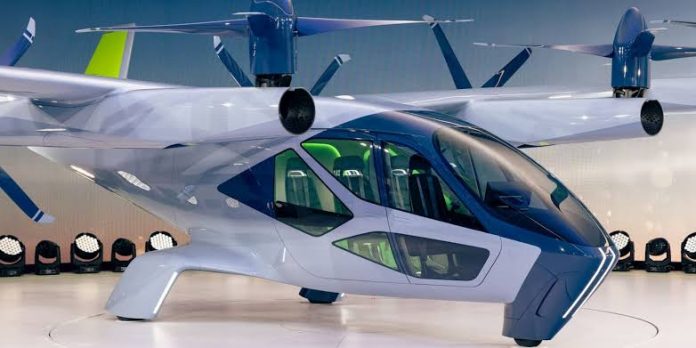Hyundai’s foray into the future of urban transportation takes flight with the S-A2, a cutting-edge electric vertical takeoff and landing (eVTOL) vehicle developed by its air mobility subsidiary, Supernal. Unveiled at CES, the S-A2 is designed to cater to short city trips spanning 25 to 40 miles, with a focus on sustainability, comfort, and innovative technology.
At the heart of the S-A2’s functionality are eight tilting rotors and a distributed electric propulsion system, ensuring efficient and reliable airborne operations. The vehicle is engineered for minimal noise disruption, targeting 65 dB during takeoff and landing – akin to a dishwasher – and an even quieter 45 dB while cruising, contributing to a more seamless integration into urban environments.
Hyundai’s commitment to sustainability extends to its exploration of diverse battery technologies for the flying taxi. In addition to conventional options, the company is considering lithium-metal and solid-state batteries, signaling a dedication to environmentally friendly solutions and technological advancement.
In a strategic move, Hyundai leverages its established mass production network to build the flying taxis, aiming to maintain high quality while concurrently reducing production costs. This approach aligns with the broader goal of making advanced air mobility accessible and efficient for urban commuters.
Looking ahead, Supernal plans to apply for US certification by mid-2024, paving the way for flight tests later that year. The anticipated official launch of the S-A2 is set for 2028, marking a significant milestone in Hyundai’s vision for the future of urban air transportation. With its innovative design, sustainability focus, and careful production strategy, Hyundai positions itself at the forefront of the emerging eVTOL market, aiming to revolutionize the way people navigate and commute within cities.


